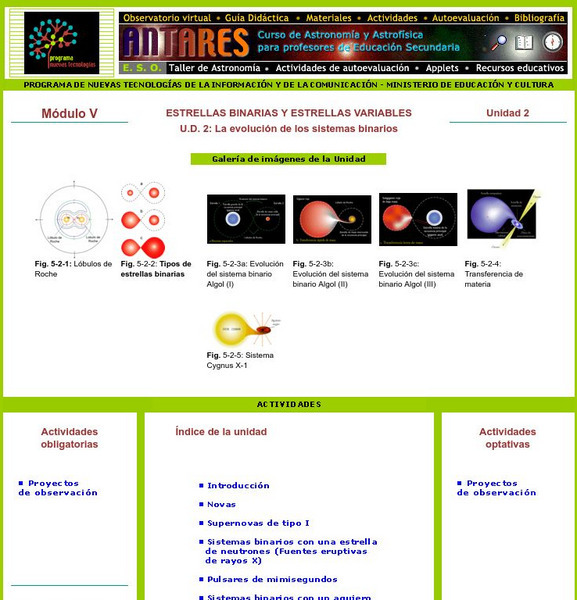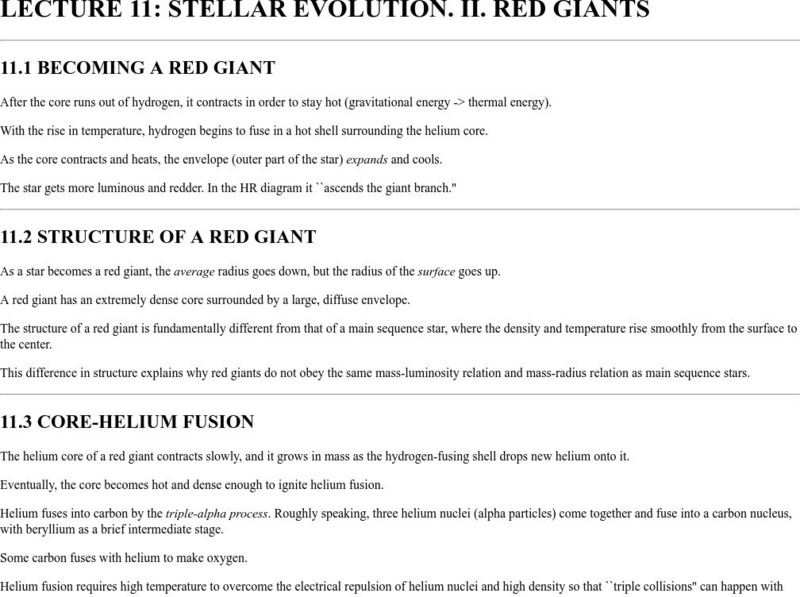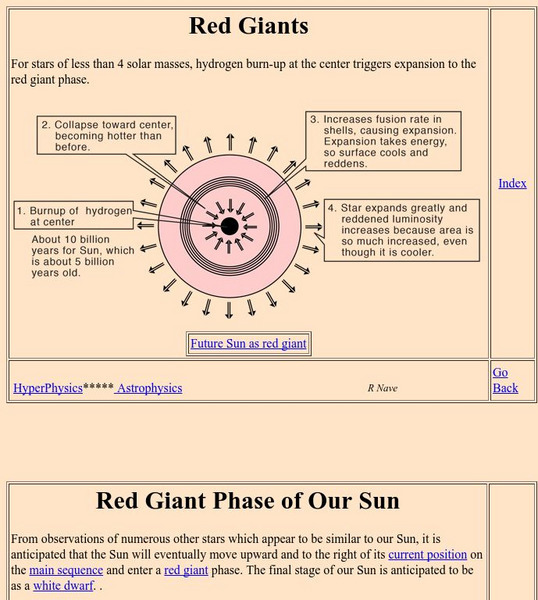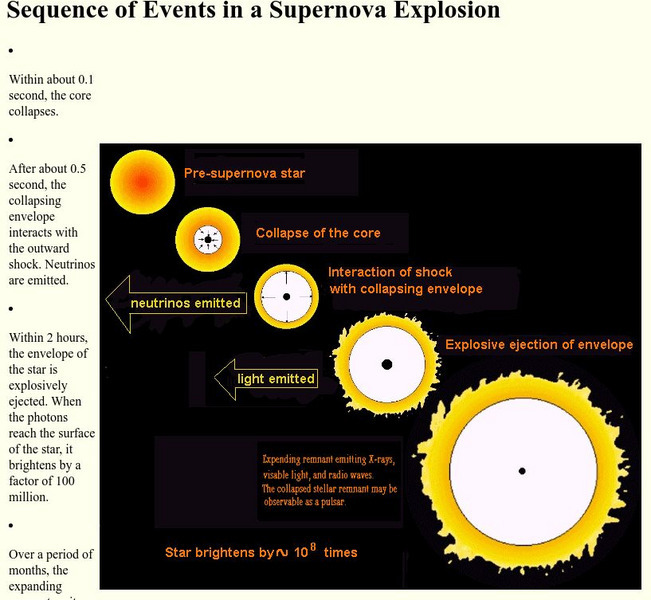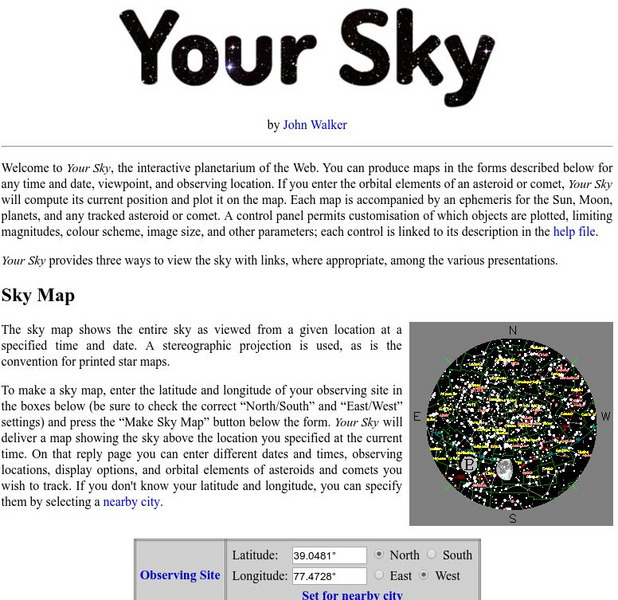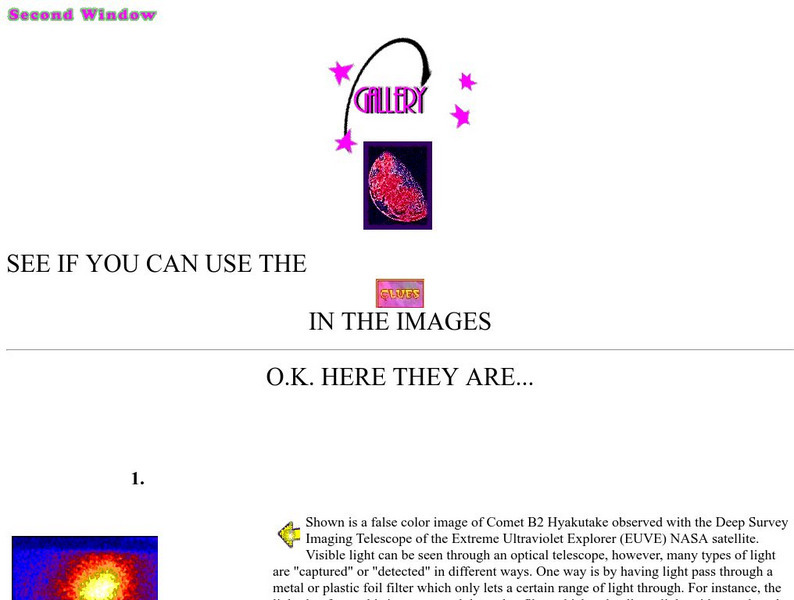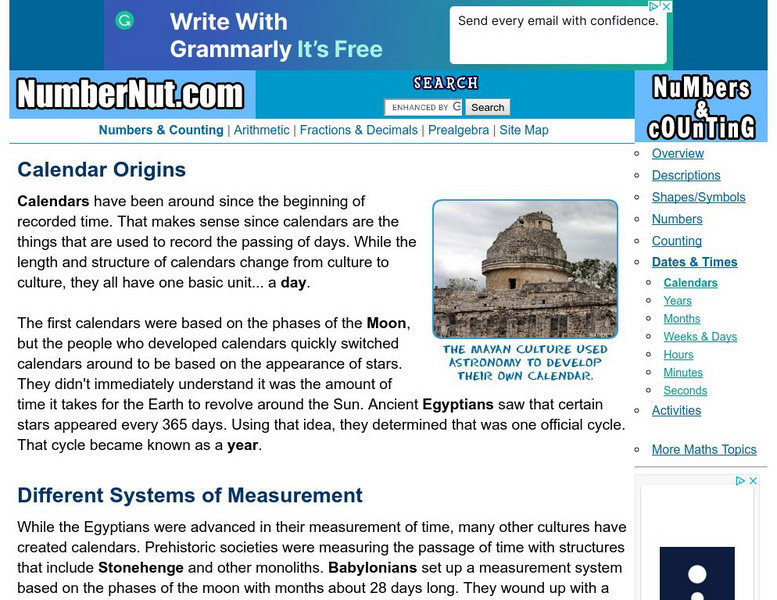Hi, what do you want to do?
Ministerio de Educación (Spain)
Ministerio De Educacion: Nuestra Galaxia, Llamada via Lactea Mod Vii Unit 1
Learn about our galaxy, their mass and the evolution of the various theories about their conception.
Ministerio de Educación (Spain)
Ministerio De Educacion: Estrellas Binarias Y Variables Modulo v Unidad 2
In this module you will study about Novae and Supernovae and will learn about the evolution of the binary system.
Ohio State University
Ohio State University: Red Giant Star Lecture Notes
Describes how a star becomes a red giant, the structure of a red giant, core-helium fusion, lifetime predictions, and the position on the HR diagram.
Other
Sky Server: About Astronomy
This site from SkyServer provides the history of astronomy as well as links to mapping the sky, galaxies, cosmic structures and much more. Several pictures are given, and the article is medium in length.
Other
Canal Kids: Ciencias (Science for Portuguese Speakers)
Colorful, engagingly written information about astronomy and biology for Portuguese-speaking English language learners. Both subjects are broken down into a broad array of related subtopics. The biology section is particularly helpful...
Other
Planetary Nebulae Observer Home Page
This home page is linked to detailed descriptions of nebulae types, shapes, and structures and their relationship to stellar evolution, a historical perspective on the discovery of nebulae, a gallery of images, and other related resources.
NASA
Nasa: Astronomy Picture of the Day: Giant Stars
Image of a group of red giant stars are seen in an image from the edge of the plane of the Milky Way. The evolution of these stars is explained. Many embedded links contained in the text to related topics.
Georgia State University
Georgia State University: Hyper Physics: Red Giants
Describes the red giant star's development stages and the scenario of our sun as a red giant. Diagrams are used to present the information.
California Institute of Technology
Cool Cosmos: Ask an Astronomer
Explore the night sky with some help from Cool Cosmos. This site provides a list of the most frequently asked questions about the things we can see at night. Click on the question link and delve into the beauty of evening.
NASA
Nasa: Kepler's Third Law
This site from NASA states Kepler's third law of motion and extends it to develop an equation for the velocity of an orbiting planet.
Cornell University
Cornell University: Astronomy: Sequence of Events in a Supernova Explosion
The complex sequence of events in a supernova explosion are explained and illustrated.
NASA
Viewing the Violent Universe: What Are Gamma Rays?
The universe produces a broad range of light, only a fraction of which is visible to our eyes. Gamma rays are nonvisible light, which also includes x-rays, ultraviolet light, infrared radiation, and radio waves.
Fourmilab Switzerland
John Walker: Your Sky
You can produce sky maps for any date and time, viewpoint or observing location. See your sky map, horizon view, or track an asteroid or comet on this highly interactive site.
NASA
Electromagnetic Spectrum: Ultraviolet Waves
Ultraviolet (UV) light has shorter wavelengths than visible light. Though these waves are invisible to the human eye, some insects can see them. The specific wavelength values are given. Uses and applications of these waves are explained.
Cosmo Learning
Cosmo Learning: Astrobiology and Space Exploration
A collection of video lectures from several guest speakers about issues of astrobiology and space exploration at Stanford University. The lectures cover topics like Martian meteorites, planetary system, life in space, and satellites....
Cosmo Learning
Cosmo Learning: Modern Physics: Cosmology
A collection of video lectures from a cosmology course taught at Stanford University. The course gives an overview of the universe as a whole while focusing on astrophysics, physics, and astronomy in eight lectures. Lectures vary in length.
NASA
Nasa: History of Venus Transit
NASA site recounts the history of the Venus Transits that have occurred over the past centuries and the various descriptions astronomers have written about them.
PBS
Pbs Learning Media: Spin a Spiral Galaxy
This interactive activity from NOVA Online lets you spin a spiral galaxy, including our own Milky Way. It demonstrates that what you can learn from visible light observations of a galaxy is largely determined by the angle from which you...
University of Illinois
University of Illinois: Stars and Constellations: White Dwarf Supernovae
Discusses the formation of the white dwarf and the role this star plays in the formation of a white dwarf supernovae.
Space Telescope Science Institute
Hubble Site: Edwin Hubble
At this site from HubbleSite provides information on how Edwin Hubble (1889?1953 CE) made some of the most important discoveries in modern astronomy. Learn about them as well as the invention of the Hubble Space Telescope. Open 'Who was...
University of Illinois
University of Illinois: Stars and Constellations: Planetary Nebulae
This resource contains information about planetary nebulae and their characteristics.
University of California
Center for Science Education: Gallery
A gallery of astronomy images which depict galaxies, comets, the moon, planets, nebulae, supernovae as seen in various regions of the electromagnetic spectrum. Each image in the gallery is described. Fascinating!
NumberNut
Number Nut: Calendar Origins
History and mathematics merge in this lesson that explores the origin of the calendar. Learn how it all got started in this detailed lesson that includes a simple months of the year game and a more challenging time conversion game. Both...
University of Wisconsin
The Why Files: Things That Go Bump in Space
Contains an introduction to x-ray astronomy, describing how x-rays are being used by scientists to learn about the universe. Also contains links to sites describing black holes, dark matter, neutron stars, and how they are investigated...






